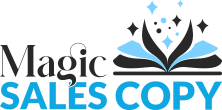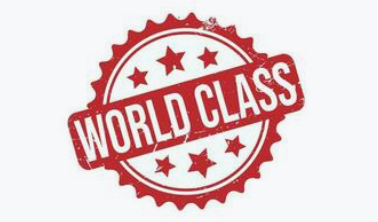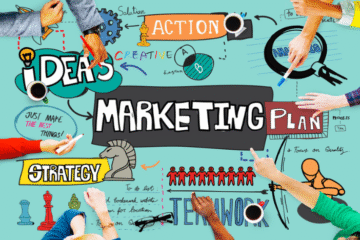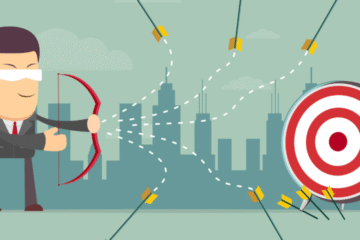Let’s be brutally honest for a second.
Most e-newsletters suck.
They’re dull. Lifeless. Packed with generic “value” nobody asked for. And worse — they’re written as if the goal is to avoid making money.
But a world-class e-newsletter?
That’s an entirely different animal.
It’s not just a weekly “update.”
It’s a living, breathing sales engine that builds authority, earns trust, and keeps your readers hungry for more.
And if you do it right — your e-newsletter becomes your business’s most profitable asset.
Let’s dig in.
1. The Golden Rule: Write Like a Friend, Not a Brand
If your email sounds like it was written by a corporate robot, you’ve already lost.
People don’t want to “engage with a brand.” They want to connect with a human being.
So write like one.
Talk the way you talk. Tell stories. Confess mistakes. Use contractions. Make them feel something.
Clayton Makepeace used to say, “If you can get a reader nodding along, you can get them to buy.”
The key?
Drop the “professional” mask and speak directly, one-to-one, as if your best customer is sitting across the table, sipping coffee with you.
2. Lead With a Hook — or Lose Them in 3 Seconds
You’ve got about three seconds to prove your newsletter is worth reading.
So forget the fluffy intros. Start with something magnetic:
A shocking stat.
A bold claim.
A burning question.
A short, emotionally charged story.
Example:
“If your e-newsletter doesn’t make sales — it’s not a newsletter. It’s a hobby.”
See what happened there? Curiosity. Emotion. A pinch of challenge.
That’s what pulls readers in and keeps them glued.
3. Teach Something Valuable — But Tease What’s Next
Here’s where most newsletters fall apart.
They either:
A) Teach everything (and leave no reason to keep reading next week), or
B) Teach nothing (and leave readers disappointed).
The sweet spot is this: deliver insight, not instruction manuals.
Show them what to think — not every detail of how to do it.
Give them “aha” moments that reframe the way they see their problems. Then promise next week’s issue will take them even deeper.
Clayton called this “installing buying belief.” You’re training readers to see the world your way — so when you make an offer, it feels like the natural next step.
4. Make Every Issue a Mini Sales Letter
Don’t panic — I don’t mean “pitch, pitch, pitch.”
I mean structure.
A world-class newsletter follows the same psychology as a high-converting sales letter:
Grab attention.
Build curiosity.
Prove authority.
Deliver value.
Call to action.
Even if your “call” is just to click a link, reply, or read the next issue — train your audience to respond.
Engagement is a muscle. The more they flex it, the easier it is to sell later.
5. Stories Sell. Facts Don’t.
Think about the newsletters you actually read.
Chances are, they tell stories.
Stories are how the human brain makes sense of information — and how you make your lessons stick.
Tell the story of a client breakthrough.
Tell the story of your first big failure.
Tell the story of what you learned from losing a sale.
Because every story has a moral — and that moral builds trust, credibility, and connection faster than a bullet list ever could.
6. Build a Rhythm — and Never Miss It
If your readers can’t count on you, they’ll forget you exist.
Consistency is what turns readers into fans, and fans into customers.
Whether you send your e-newsletter weekly, twice a month, or daily — show up like clockwork.
You want your subscribers to think, “Oh good, it’s Friday — time for Sean’s newsletter.”
That habit is priceless.
7. Sell Without “Selling”
The secret weapon of a world-class e-newsletter is subtlety.
You’re not shouting, “Buy now!”
You’re leading readers to see buying as the obvious next step.
You do that by:
Sharing proof your ideas work.
Showing transformation (yours or a client’s).
Making offers a natural extension of your content.
You’re not forcing. You’re inviting.
Clayton called this “emotional momentum.” By the time readers reach your offer, their hearts have already said yes.
8. End with a Cliffhanger
Want your open rates to double?
End every issue with a reason to read the next one.
Example:
“Next week, I’ll show you the 3-minute tweak that doubled one client’s response rate — using the exact same list.”
That’s not just content. That’s anticipation.
And anticipation is one of the most powerful forces in marketing.
9. The Ultimate Test
If you want to know whether your e-newsletter is world-class, ask yourself this:
Would you look forward to reading it?
If not — rewrite until you would.
Because your readers don’t owe you attention. You earn it with every word.
Final Word
A world-class e-newsletter doesn’t just inform. It inspires action.
It transforms strangers into fans, fans into customers, and customers into loyal advocates who want to buy from you again and again.
It’s not just about what you send.
It’s about how you make them feel while reading it.
And that’s the magic.
If you’d like to discover how to turn your e-newsletter into a customer-creating, authority-building machine — without sounding salesy or robotic — reach out to me now.




